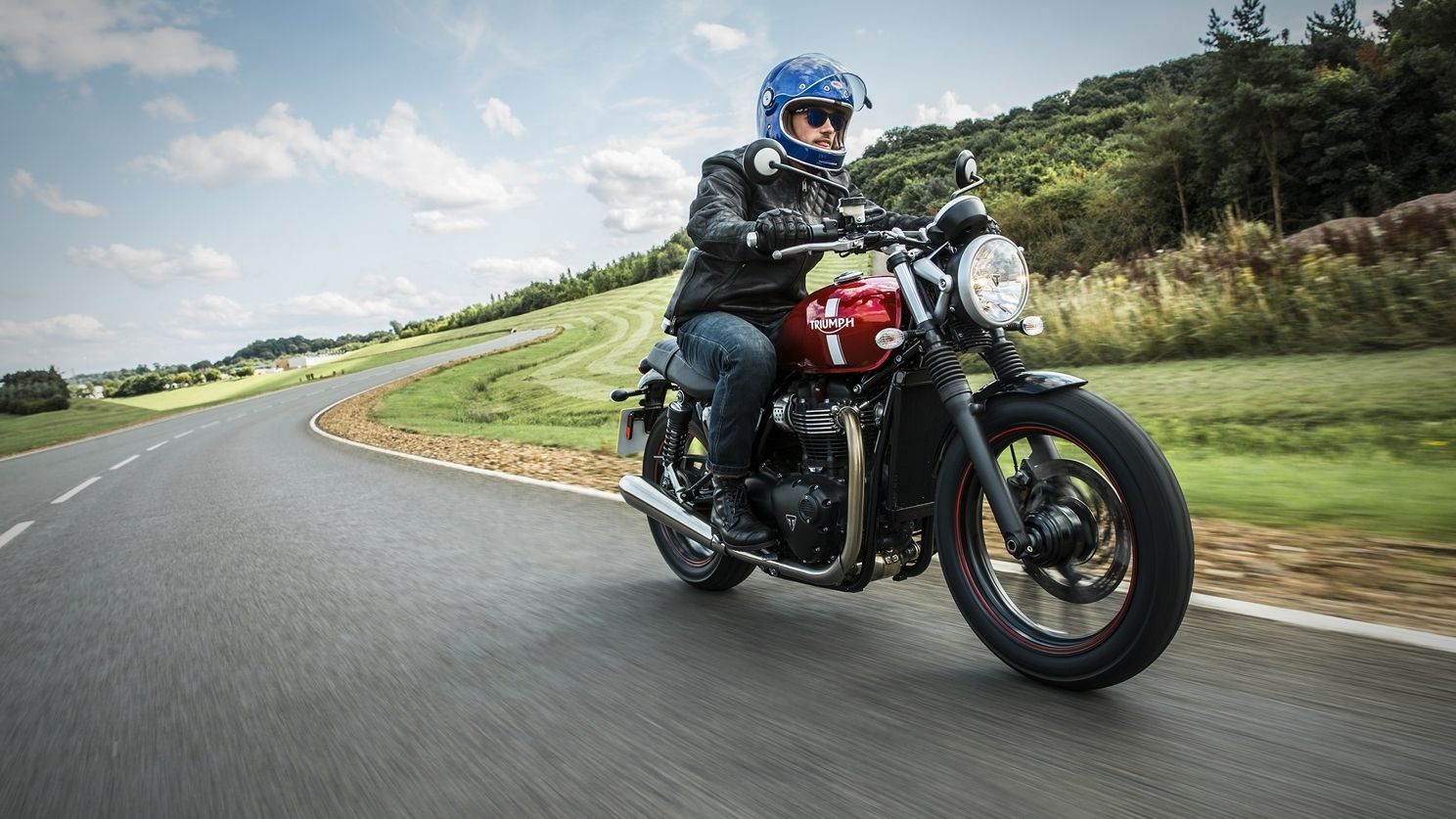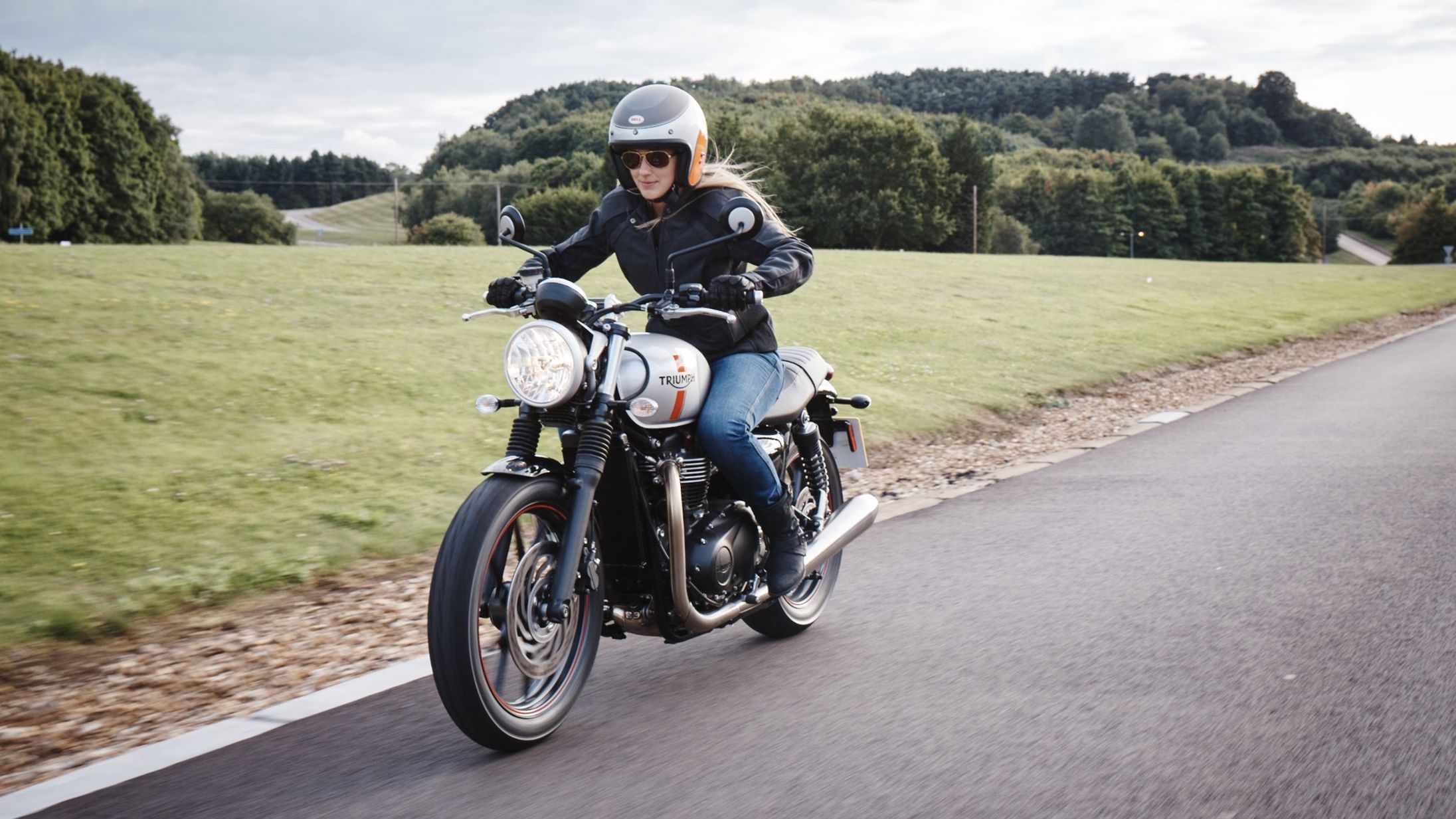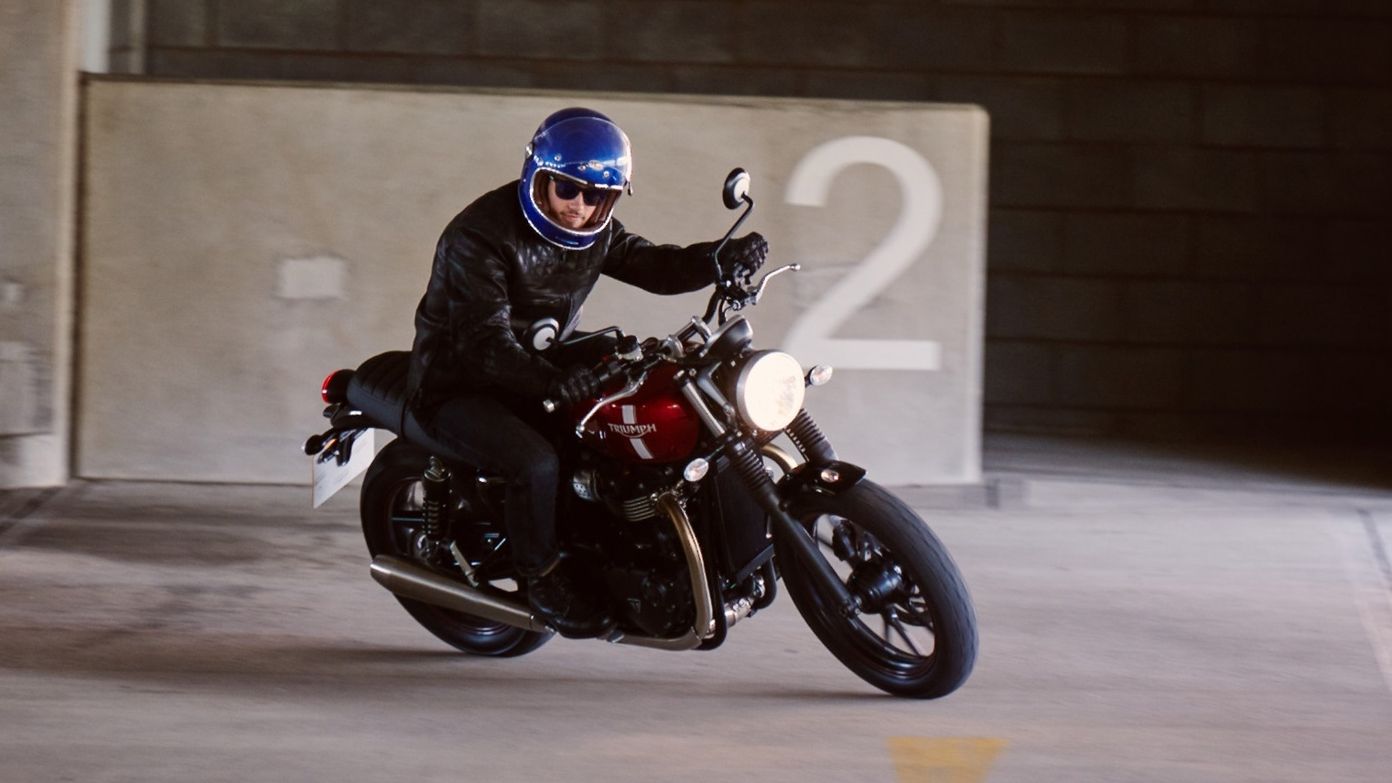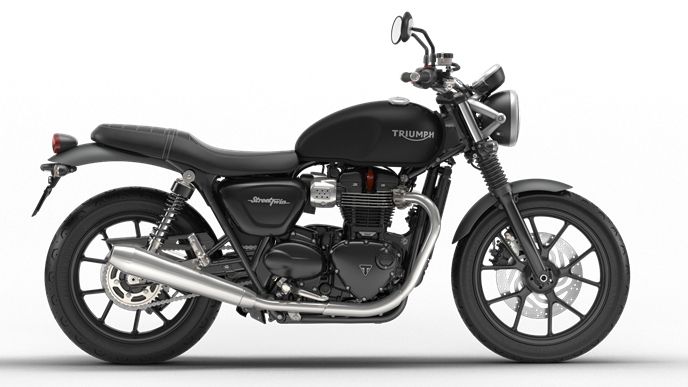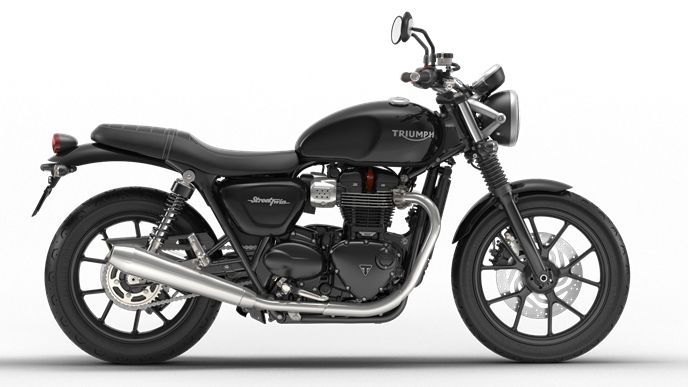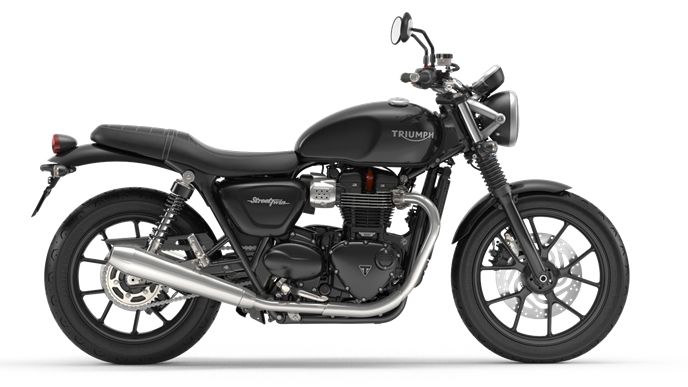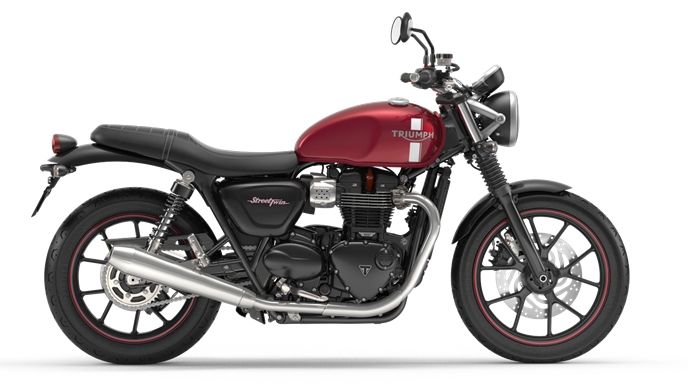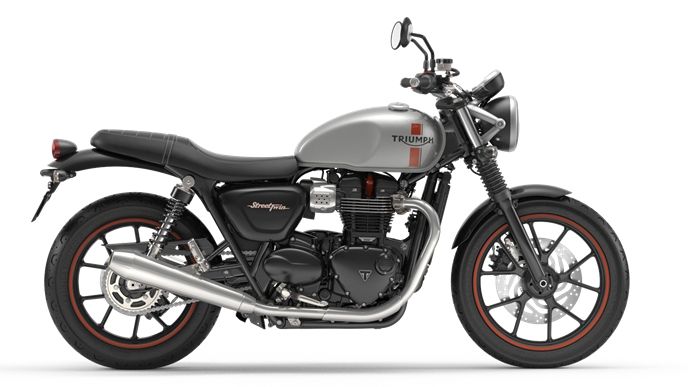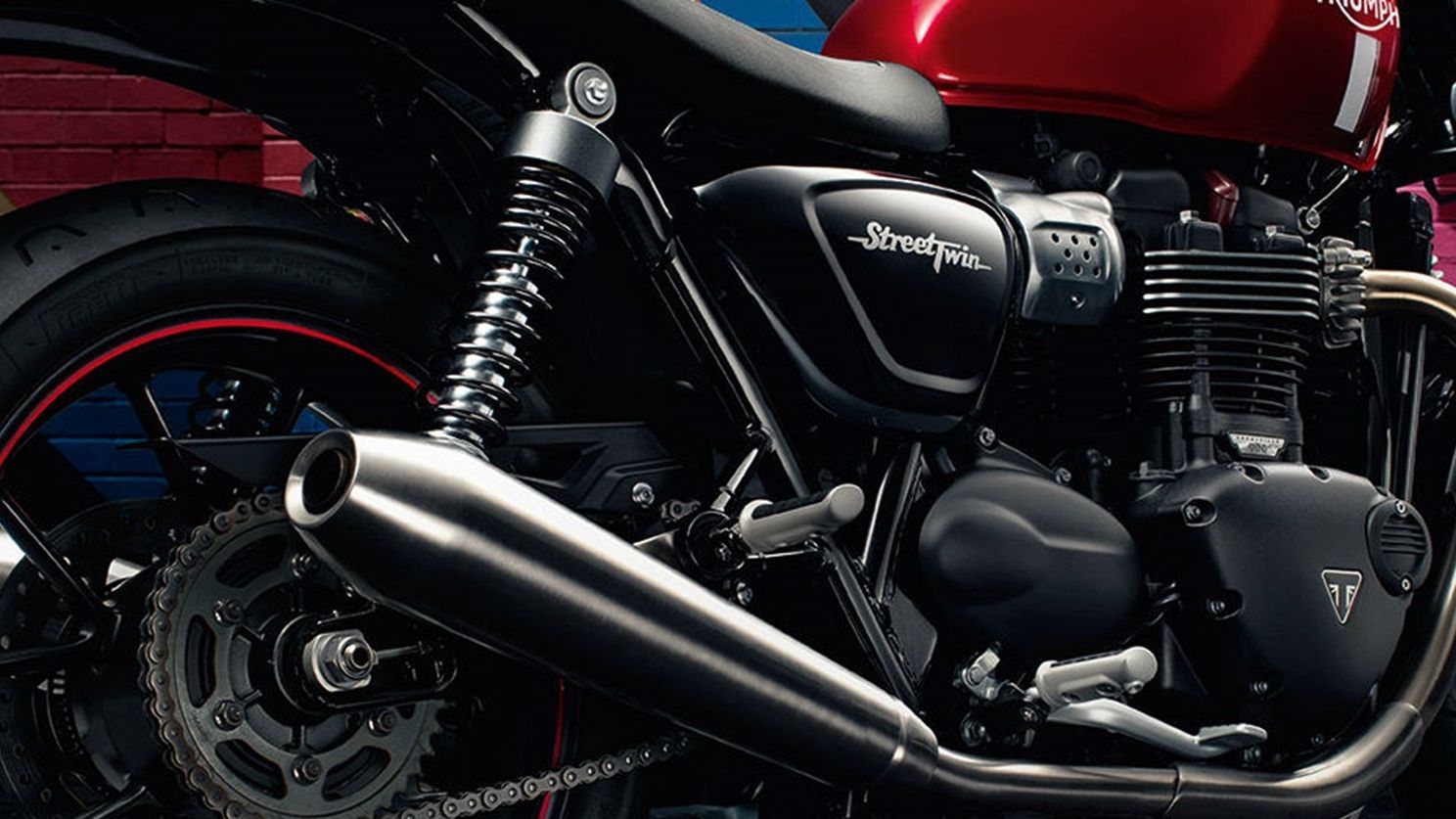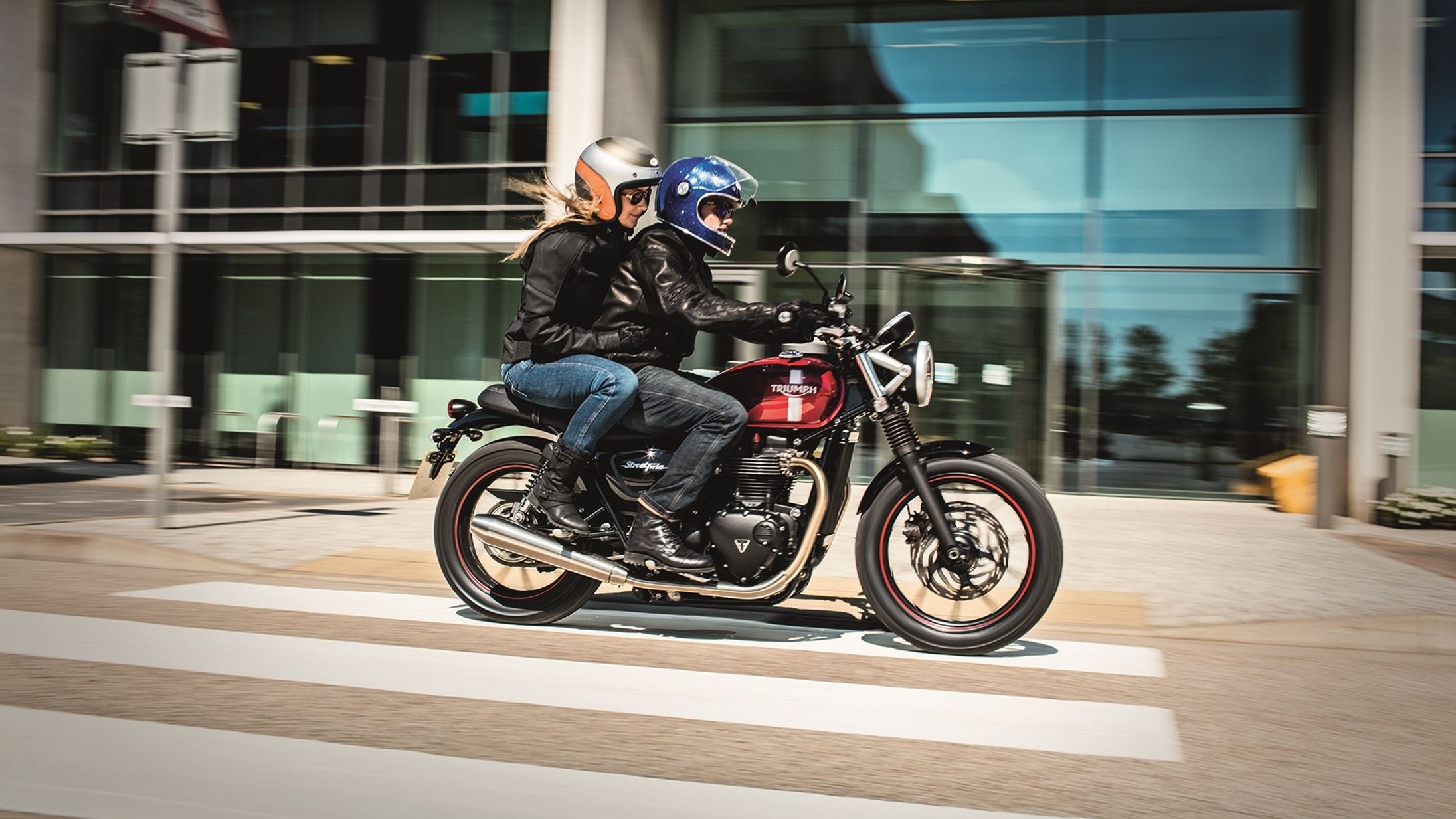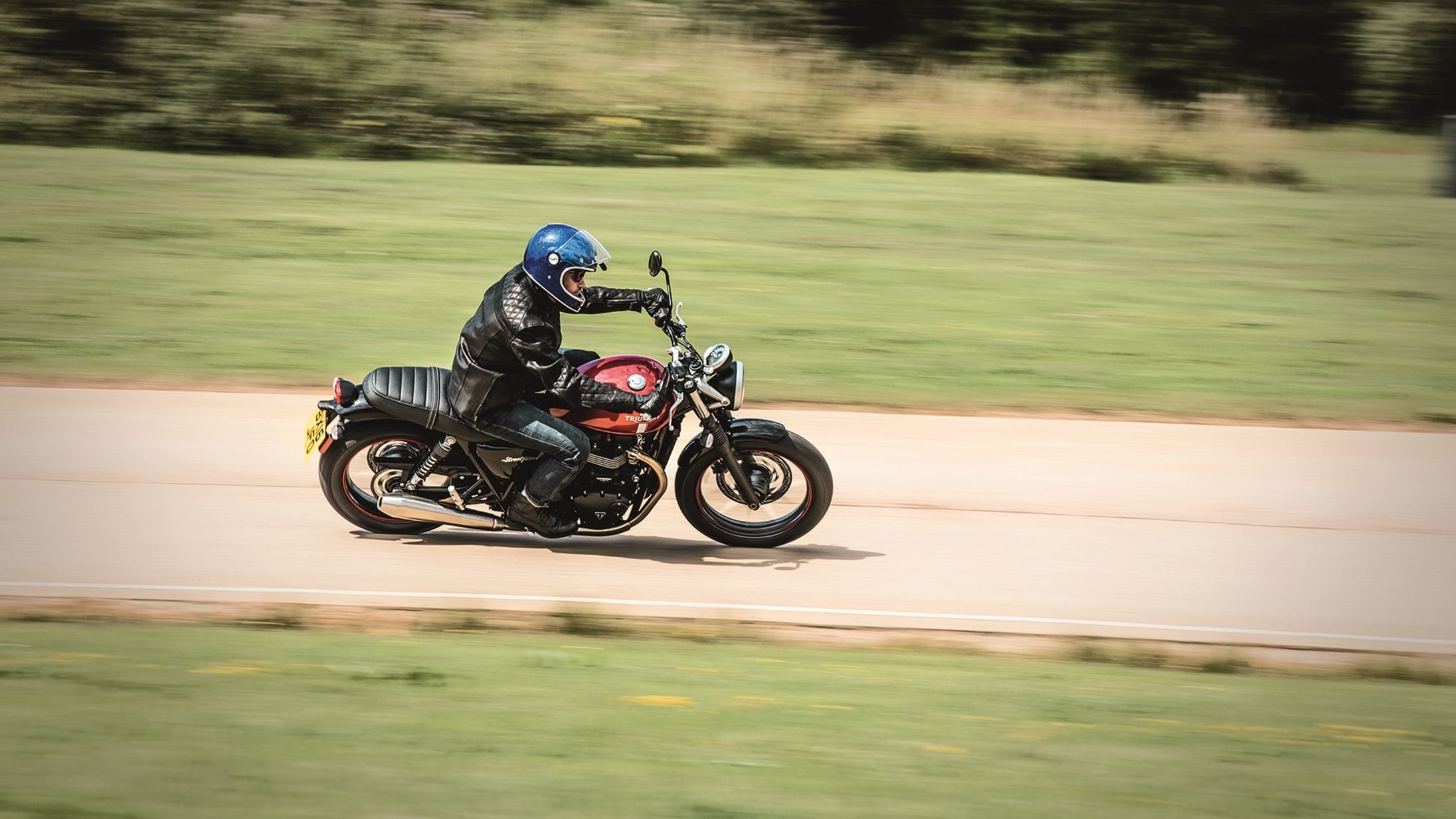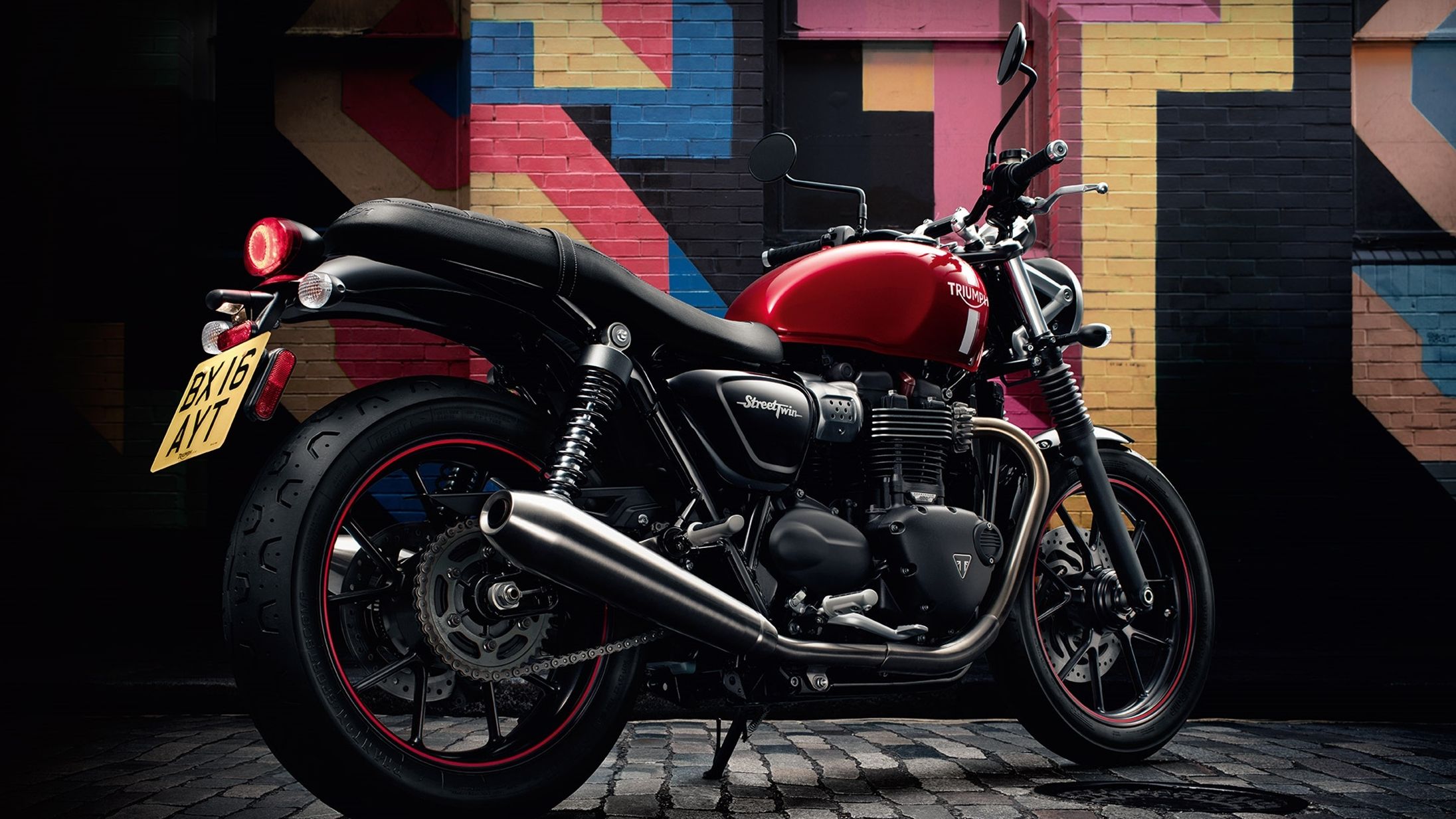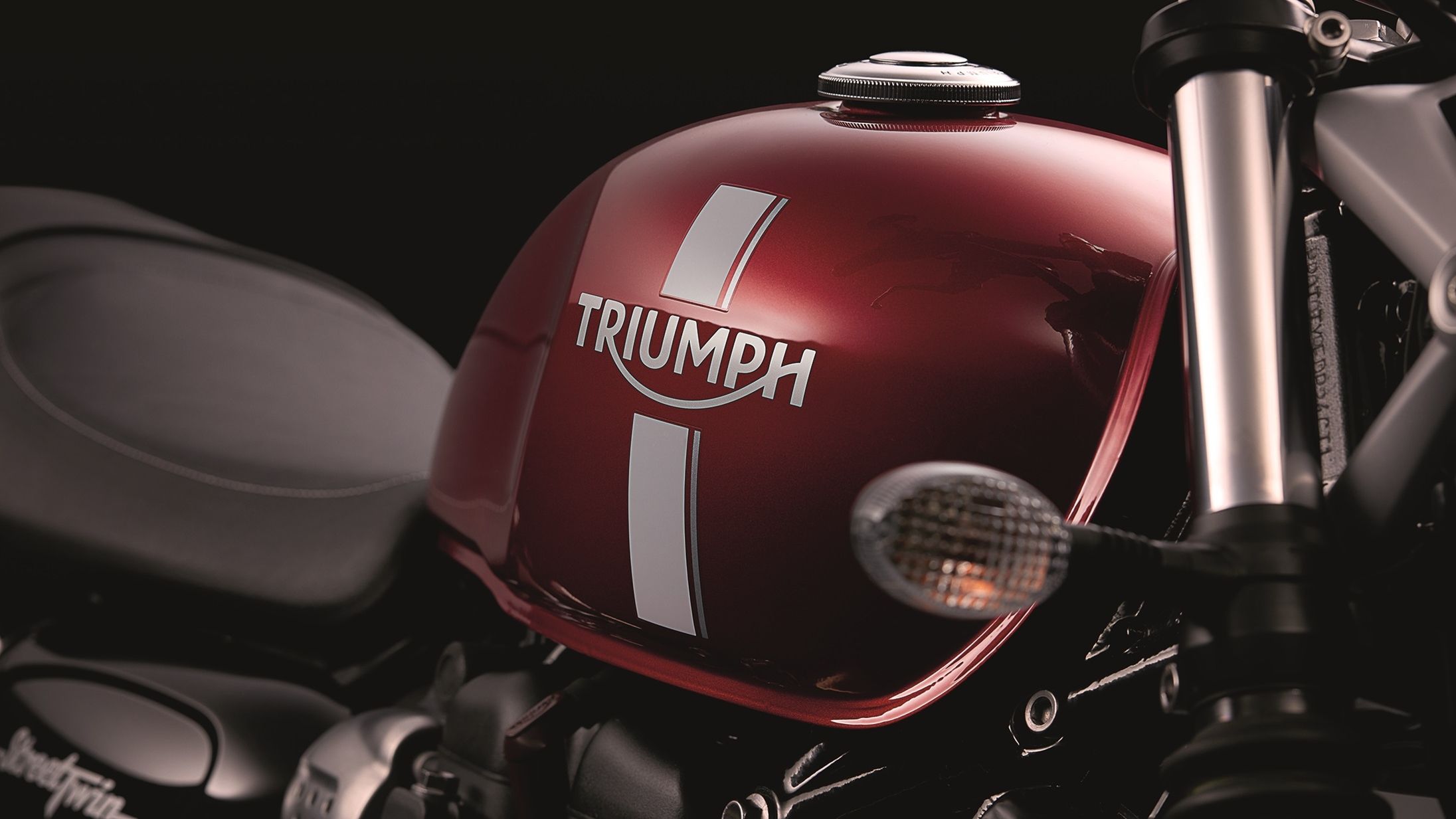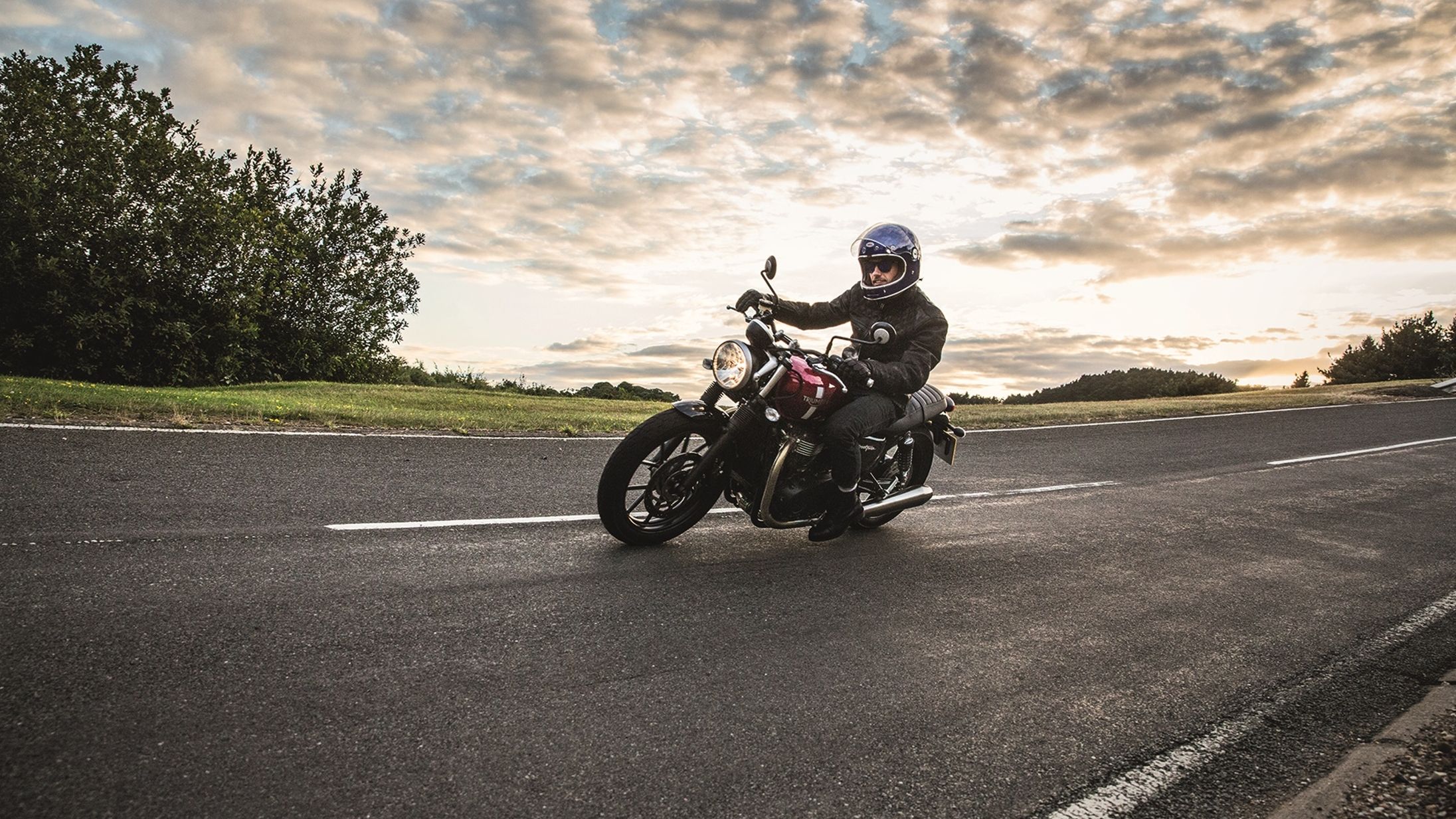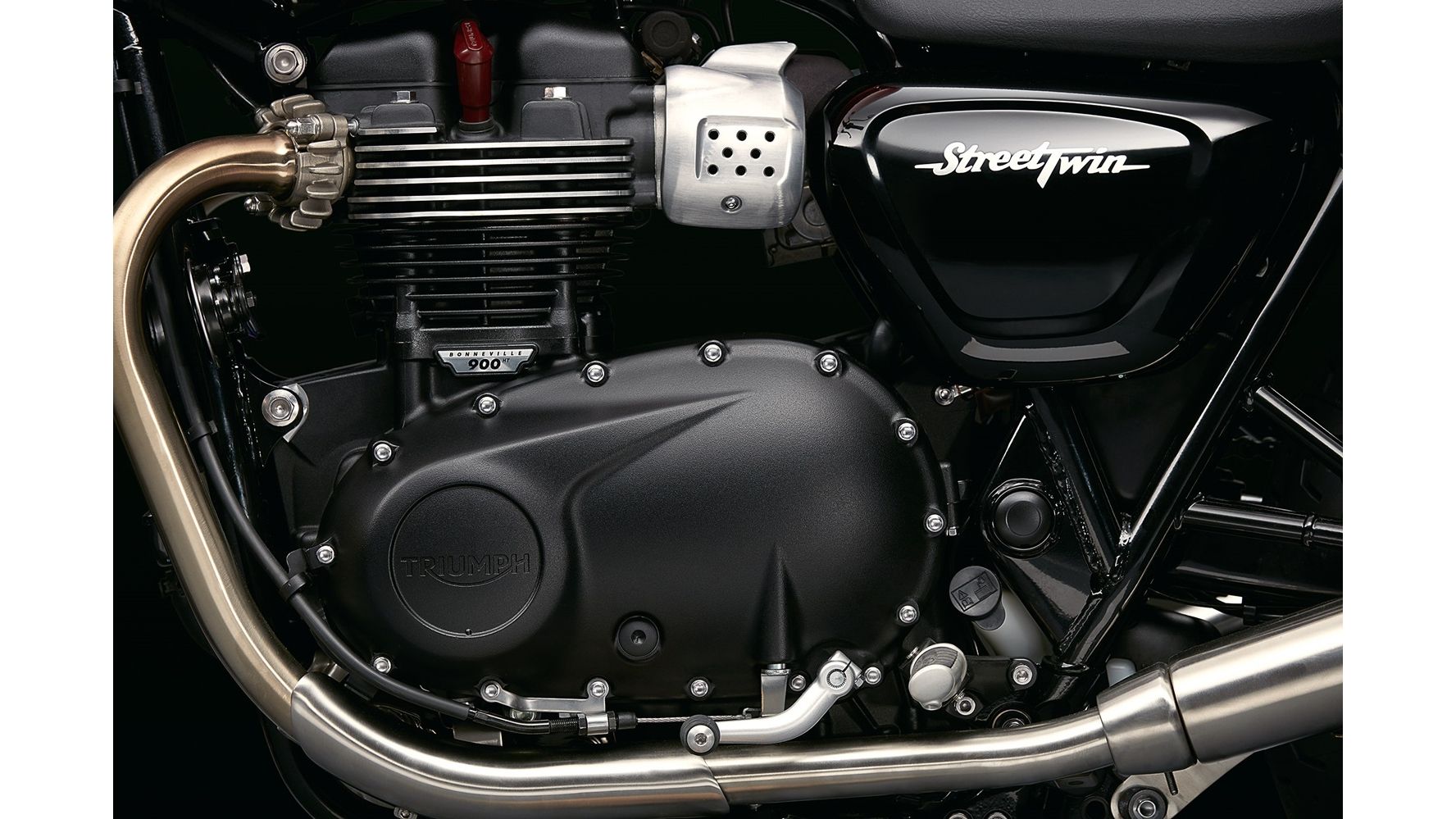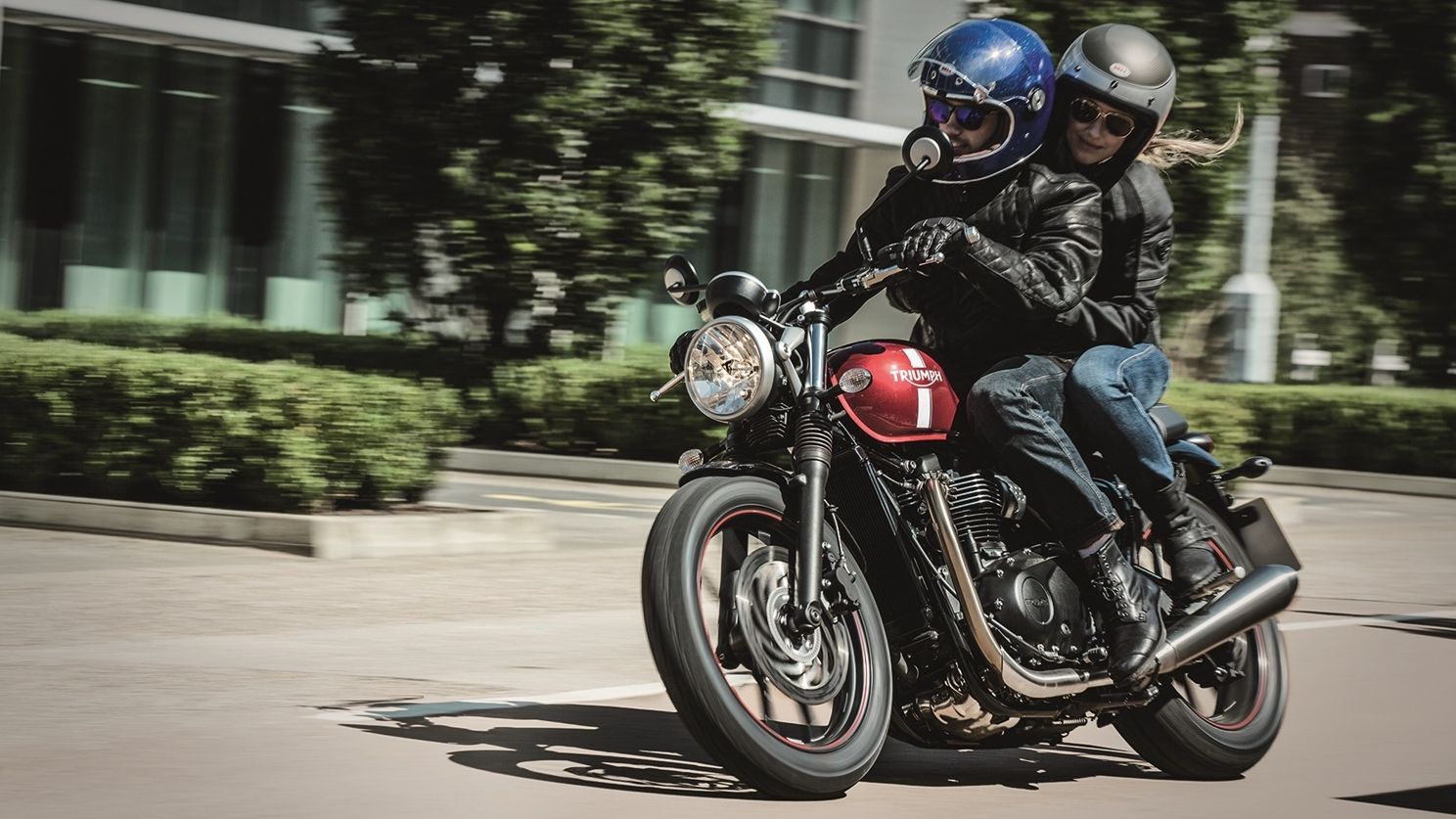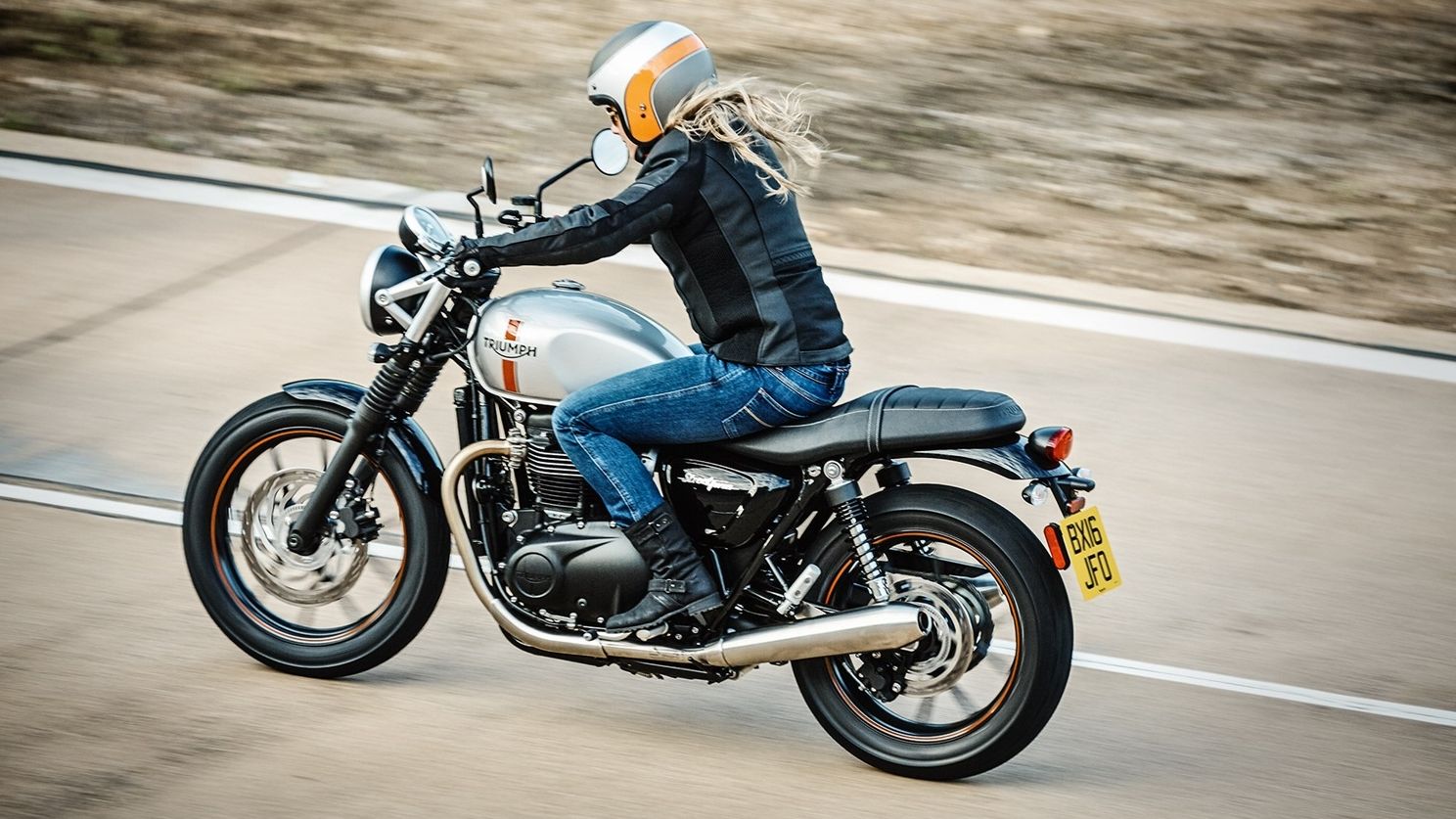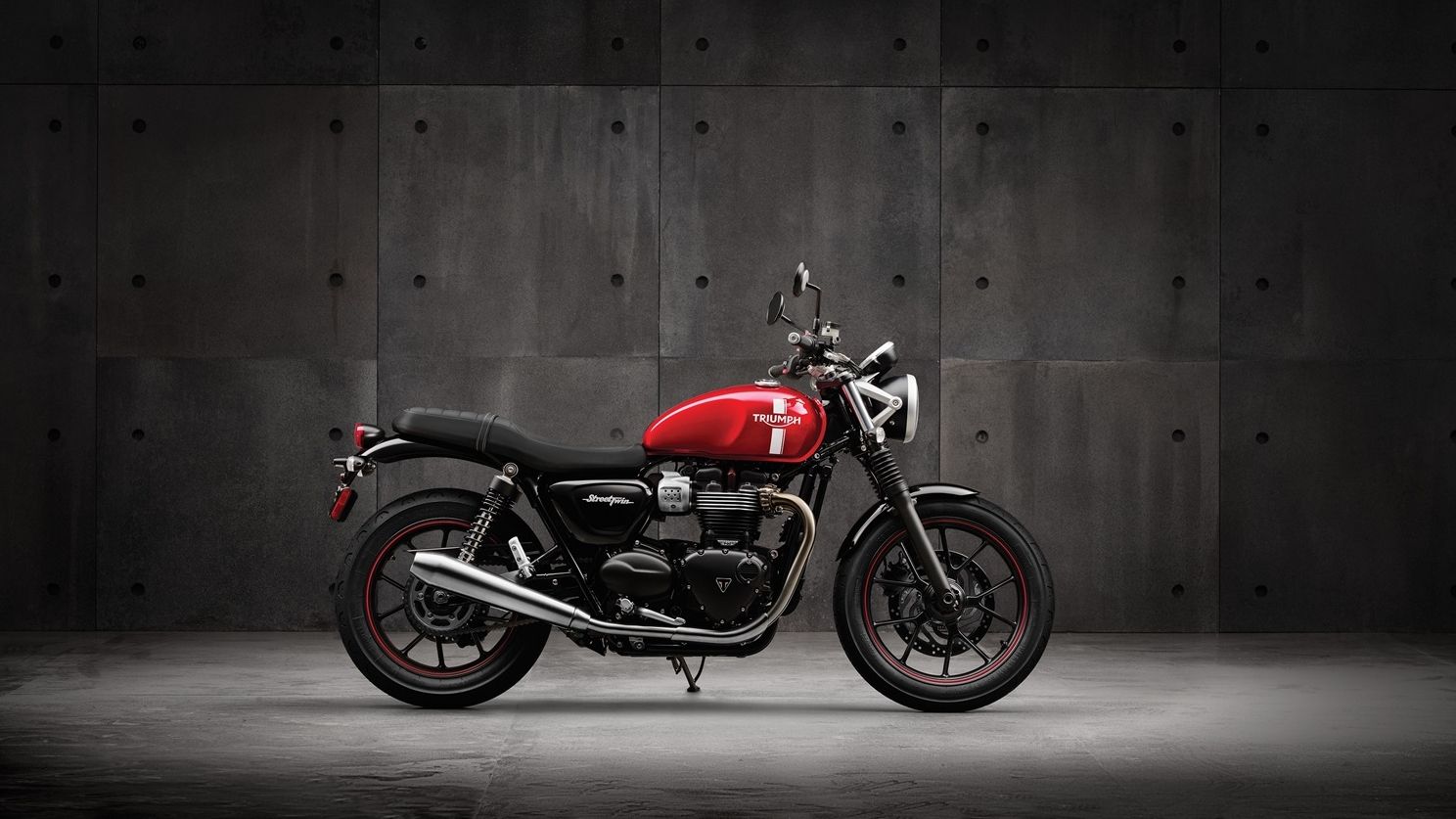The Triumph Bonneville line has underwent numerous redesigns over the years, but always kept that classic British flavor and dated panache that is both aesthetically pleasing and rooted in its own past. The Bonneville Street Twin joined Triumph's new-in-2016 Modern Classics group that includes the Bonneville T120 family and the Thruxton R. Today, I want to take a look at the Street Twin and see how well Trumpet did in upholding the reputation of the venerable Bonnie line.
Continue reading for my review of the Triumph Street Twin.
2016 - 2018 Triumph Street Twin
- Make: Array
- Model: 2016 - 2018 Triumph Street Twin
- Engine/Motor: Parallel-Twin
- [do not use] Vehicle Model: Array
Design
No matter what style of bikes you prefer, if you are old enough to legally ride street bikes, chances are pretty good that you've heard of the Triumph Bonneville family. Originally released in 1959, the Bonnie quickly became popular with speedsters in the U.S. and abroad, and it inspired numerous incarnations spanning decades.
Technically, the Street Twin falls within the standard classification, and shares an overall look similar to the '60s UJM, so perhaps I should call it a UBM? I could also make an argument for labeling this ride a sort of a bobber, since there is very little in the way of unnecessary or extraneous components in evidence. Trumpet complicates this further by offering three separate accessory packages, what the factory calls its “Inspiration Kits,” that take the Street Twin into some decidedly niche directions.
While the base-model displays a generally classic look, the kits strive for a specific style and timeframe. First up is the “Scrambler” kit, not to be confused with the Scrambler proper, which is a stand-alone model. This kit comes with straight-back, two-into-one header pipes and a horizontally mounted Vance and Hines muffler, along with an embossed, tuck and roll bench seat to give your Street Twin a decidedly scrambler flavor.
Next, we have the “Brat Tracker” that comes with true dual exhaust, up-swept mufflers and a black bench seat. The last kit is the Urban, and it isn't so much a particular niche or model as much as a reflection of a general, owner-modified design that includes an up-swept exhaust, offset pillion saddle, saddlebags and bikini screen above the headlamp.
As much as I like the other versions, the Urban stands out as the most practical commuter off the floor due to the bag space, however limited. The others, well, just look really cool. All of the Street Twin models come with blackout rims, fork sliders, engines and side covers, for that old-school custom finish.
Chassis
A double-downtube, double-cradle frame welded up from tubular steel members serves as the bones, and a traditional, yoke-style steel swingarm finishes the skeleton. The steering head angle of 25.1-degrees leaves us with 4 inches of trail, a nice middle ground between stability and agility. At 29.5-inches tall, the Street Twin seat height should be manageable for most riders out there, and at 437 pounds dry you don't have to have legs like an Olympic runner to control it at dead-slow speeds.
Blackout aluminum rims mount the 18-inch front, and 17-inch rear hoops, as well as the wheel-speed sensors that feed data to the ABS and traction control system, but I must confess that I think laced wheels would look better, and be more in keeping with the old-school appeal of the rest of the bike.
A set of Kayaba 41 mm forks up front, and twin rear shocks, also from Kayaba, provide 4.72 inches of travel all around. The front forks come sans adjustments, but the rear shocks offer the typical, spring-preload adjustment so at least you can dial in for changing cargo and passenger loads. Twin-pot, Nissin calipers bind both the 310 mm front disc, and the 255 mm rear, and ABS protection comes standard.
|
Frame: |
Tubular steel cradle |
|
Swingarm: |
Twin-sided, tubular steel |
|
Rake: |
25.1º |
|
Trail: |
4.0 in (102.4 mm) |
|
Front Suspension: |
Kayaba 41 mm forks, 120 mm travel |
|
Rear Suspension: |
Kayaba twin shocks with adjustable preload, 120 mm rear wheel travel |
|
Wheels, Front/Rear: |
Cast aluminum alloy multi-spoke, 18 x 2.75 in/17 x 4.25 in |
|
Tires, Front/Rear: |
100/90-18/150/70 R17 |
|
Brakes Front: |
Single 310 mm disc, Nissin 2-piston floating caliper, ABS |
|
Brakes Rear: |
Single 255 mm disc, Nissin 2-piston floating caliper, ABS |
Drivetrain
Triumph's engineers built a brand-new engine to drive this brand-new ride, and spent considerable R&D resources to bump up the power output. They wound up with a water-cooled, 900 cc lump sporting eight-valve heads in the classic, parallel-twin configuration. Thankfully, Triumph long ago abandoned the “twingle” crankshaft with its 180-degree offset, and instead used a 270-degree crank in this new mill. The 84.6 mm bore and 80 mm stroke leaves the engine slightly over-square, and while the fuel-injected throttle bodies lack the charm of the old carburetors, I have to admit they look better than most throttle bodies available today.
Now for the proof in the performance-numbers pudding. Trumpet boosted the grunt numbers by 18-percent over the previous generation for a total of 59 pound-feet of torque at 3,230 rpm. It also cranks out 55 ponies, but you have to wind it up to 5,900 rpm to wring the max horsepower out. Not one to deliver uncontrollable power, Triumph gifted the Street Twin with ride-by-wire throttle control that enables its traction control system that reduces power output when it detects a wheel-speed differential between the front and rear tires. Great for maintaining traction, not so much for burnouts, but you don't get to have it both ways, yeah?
The factory didn't stop there with the traction protection, oh no. In addition to the above, a slipper clutch provides an easy clutch-lever pull while prevent wheel hop when aggressively downshifting to scrub off speed ahead of a curve. I have to say that safety doo-dads are no substitute for skill, but a full compliment of traction-control can help you safely find the edge of the envelope without undue risk. A five-speed transmixxer crunches the ratios, and sends power to the rear wheel via an X-ring chain.
|
Engine: |
Liquid cooled, 8 valve, SOHC, 270° crank angle parallel twin |
|
Displacement: |
900 cc |
|
Bore/Stroke: |
84.6 mm / 80 mm |
|
Compression: |
10.55:1 |
|
Max Power EC: |
55 Hp (40.5kW) 5,900 rpm |
|
Max Torque EC: |
59 FT-lbs (80Nm) 3,200 rpm |
|
System: |
Multipoint sequential electronic fuel injection |
|
Exhaust: |
Brushed stainless steel 2 into 2 exhaust system with twin silencers |
|
Final drive: |
X ring chain |
|
Clutch: |
Wet, multi-plate assist clutch |
|
Gearbox: |
5-speed |
Price
There aren't that many small bikes out there with “the traction-control-trinity,” which is to say, ABS, throttle moderation and slipper clutch, and even fewer under 10 grand, so I am pleasantly surprised to see the $9,100 MSRP on the base Street Twin. In my opinion, this is a whole lotta' bike for the price, overall size and engine displacement notwithstanding.
|
Colors: |
|
|
2016, 2017: |
Jet Black, Cranberry Red, Matt Black, Phantom Black, Aluminium Silver |
|
2018: |
Jet Black, Crystal White, Aluminium Silver, Cranberry Red, Matt Black |
|
Price: |
|
|
2016, 2017: |
$8,950 |
|
2018: |
$9,100 |
Competitors
While looking for a competitor, I considered the Bolt from Yamaha. It shows a similar profile, comparable price and build, and would appeal to much the same sort of buyer. However, given Triumph's long history, I decided just doesn't have the roots for such a comparison so I instead looked to the Iron 883 Sportster from Harley-Davidson for my head-to-head.
The Iron 883 and the Street Twin are like two sides of the same coin, and the main differences are a reflection of the different bike cultures on each side of the pond. Blackout components, fork gaiters and cast rims are consistent across the board, as is the low stance and compact, mid-size overall package. Honestly the main aesthetic points to choose between the two are entirely based on Britishness versus Americana, circa 1960s and '70s.
As the devilishly clever name suggests, an 883 cc V-Twin drives the Iron and cranks out 53.8 pounds of grunt at 3,750 rpm, less torque and at a higher rpm than the Street Twin with 59 pound-feet at 3,230 rpm. Not a big difference, but a difference nonetheless. Triumph piles on with traction control and a slipper clutch -- features H-D has yet to incorporate on any of its bikes, let alone those in the lower price brackets.
I happen to know just how good the Evo Sporty engine is, and that it enjoys a long, successful track record, but it really takes a beating against this Trumpet mill based on features alone. Only time will tell if the new Triumph engine will have the same staying power as the 883 that has been running the roads since 1986. I would be remiss if I didn't mention to Harley that they are falling behind on certain features, and it's going to bite them in the butt if they don't get on board, and that right soon!
At the sticker, these two competitors seem to be backed up against the same wall. Harley lets the Iron go for $8,999, just a skosh under the $9,100 Street Twin, which is close enough on paper, but when you consider some of the features on the Triumph, the price on the Sporty starts to look a trifle high as far as price versus value goes.
versus0}
“I've said it before: I really like Triumph, especially their older models, and I love that they remain faithful to their roots. Though I am, more or less, a dyed-in-the-wool Harley fan, if I were looking for a new bike like this, I would have to take a serious look, even a test drive on the Street Twin before I could make up my mind between this and a Sporty for sure. Kudos Triumph, I don't get to say that everyday.”
He Said
My wife and fellow writer, Allyn Hinton, says, "I really like these all-new-designed Bonnevilles. The Street Twin might not have as much power as some of the older designs, but you get more of that power in the mid-range where you do most of your riding. Torque comes on early at 3,200 rpm. I like to feel the grunt without having to wind it up as tight as Dick's handband. For the price, there are plenty of tech acronyms that you usually see in higher-priced bikes. I'm glad to see the gearbox isn't clunky like some of its predecessors."
She Said
|
Engine & Drivetrain: |
|
|
Engine: |
Liquid cooled, 8 valve, SOHC, 270° crank angle parallel twin |
|
Displacement: |
900 cc |
|
Bore/Stroke: |
84.6 mm / 80 mm |
|
Compression: |
10.55:1 |
|
Max Power EC: |
55 Hp (40.5kW) 5,900 rpm |
|
Max Torque EC: |
59 FT-lbs (80Nm) 3,200 rpm |
|
System: |
Multipoint sequential electronic fuel injection |
|
Exhaust: |
Brushed stainless steel 2 into 2 exhaust system with twin silencers |
|
Final drive: |
X ring chain |
|
Clutch: |
Wet, multi-plate assist clutch |
|
Gearbox: |
5-speed |
|
Chassis: |
|
|
Frame: |
Tubular steel cradle |
|
Swingarm: |
Twin-sided, tubular steel |
|
Rake: |
25.1º |
|
Trail: |
4.0 in (102.4 mm) |
|
Front Suspension: |
Kayaba 41mm forks, 120 mm travel |
|
Rear Suspension: |
Kayaba twin shocks with adjustable preload, 120 mm rear wheel travel |
|
Wheels, Front/Rear: |
Cast aluminum alloy multi-spoke, 18 x 2.75in/17 x 4.25in |
|
Tires, Front/Rear: |
100/90-18/150/70 R17 |
|
Brakes Front: |
Single 310mm disc, Nissin 2-piston floating caliper, ABS |
|
Brakes Rear: |
Single 255mm disc, Nissin 2-piston floating caliper, ABS |
|
Dimensions & Capacities: |
|
|
Width Handlebars: |
30.9 in (785 mm) |
|
Height Without Mirror: |
43.9 in (1114 mm) |
|
Seat Height: |
29.5 in (750 mm) |
|
Wheelbase: |
55.7 in (1415 mm) |
|
Dry Weight: |
437 lbs (198 Kg) |
|
Tank Capacity: |
3.2 US Gallon |
|
Fuel Consumption: |
60.8 US MPG |
|
Details: |
|
|
Instrument Display and Functions: |
LCD multi-functional instrument pack with analogue speedometer, odometer, gear position indicator, fuel gauge, range to empty indication, service indicator, clock, 2x trip, average & current fuel consumption display, traction control status display, TPMS ready & heated grip ready - controlled by a handlebar mounted scroll button. |
|
Colors: |
|
|
2016, 2017: |
Jet Black, Cranberry Red, Matt Black, Phantom Black, Aluminium Silver |
|
2018: |
Jet Black, Crystal White, Aluminium Silver, Cranberry Red, Matt Black |
|
Price: |
|
|
2016, 2017: |
$8,950 |
|
2018: |
$9,100 |
References
Harley-Davidson Iron 883
See our review of the Harley-Davidson Iron 883.
Yamaha Bolt
See you review of the Yamaha Bolt.


